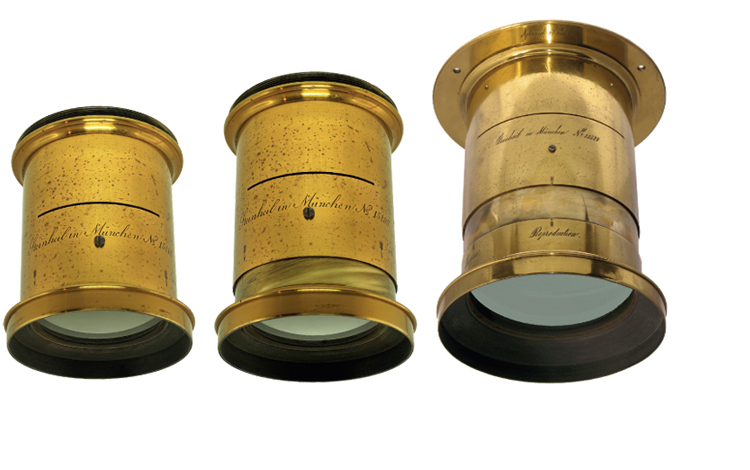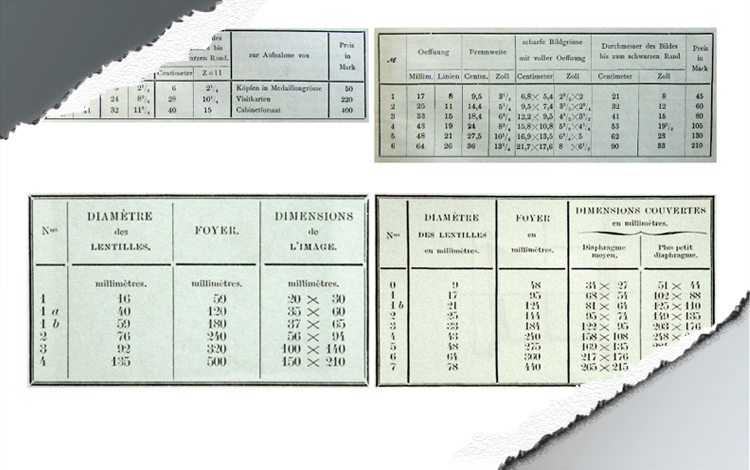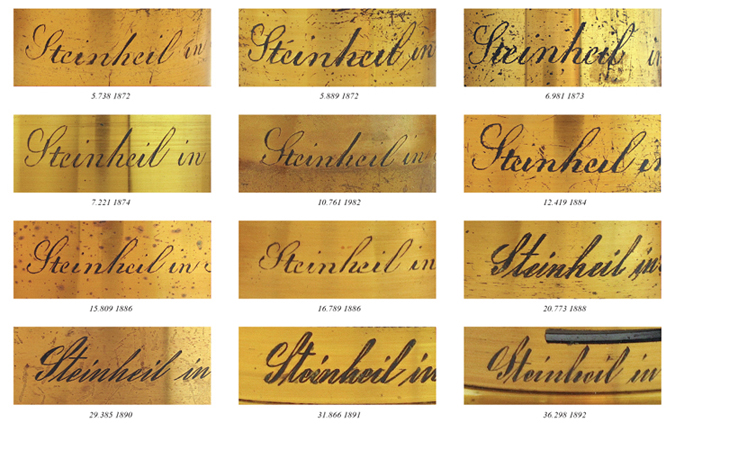A short excerpt from the fifth chapter: Steinheil
... 1868 Wide-angle Aplanat for Reproductions.
This lens was designed by order of the Austrian Military Geographic Institute for reproduction work, especially of maps. It permitted exact reproductions of up to one square meter without any distortion (43). The wide-angle design simplified handling and transportation. In 1871 it was sold to the general public (15). Initially built in six sizes of light and ordinary flint glass with an f/16 aperture, it later came in 16 sizes with focal lengths that varied from 360mm. to 2000mm. (69). It was built symmetrically with the elements very close to the diaphragm and of limited size so that a prism could be inserted to invert the image (70). In 1887 the six-element 60mm. f/15.5-f/20 reproduction Aplanat replaced the wide-angle reproduction Aplanat. Only a few of these lenses were manufactured (15). According to Eder the lens inspired Von Hoegh's Dagor lens (71). Above is an 1896 list of the various focal lengths. And below the six-element wide-angle reproduction Aplanat n. 34182 of 1892…
This lens was designed by order of the Austrian Military Geographic Institute for reproduction work, especially of maps. It permitted exact reproductions of up to one square meter without any distortion (43). The wide-angle design simplified handling and transportation. In 1871 it was sold to the general public (15). Initially built in six sizes of light and ordinary flint glass with an f/16 aperture, it later came in 16 sizes with focal lengths that varied from 360mm. to 2000mm. (69). It was built symmetrically with the elements very close to the diaphragm and of limited size so that a prism could be inserted to invert the image (70). In 1887 the six-element 60mm. f/15.5-f/20 reproduction Aplanat replaced the wide-angle reproduction Aplanat. Only a few of these lenses were manufactured (15). According to Eder the lens inspired Von Hoegh's Dagor lens (71). Above is an 1896 list of the various focal lengths. And below the six-element wide-angle reproduction Aplanat n. 34182 of 1892…
Continue...
Footnotes:
(15) Franz H., Reutinger E. pp. 131-132. The French 1896 catalogue shows its introduction in 1889.
(43) Schmitz E.H. p. 301.
(69) Franz H., Reutinger E. p. 390.
(70) Fabre 1889 p. 93.
(71) Eder 1932 p. 410.









